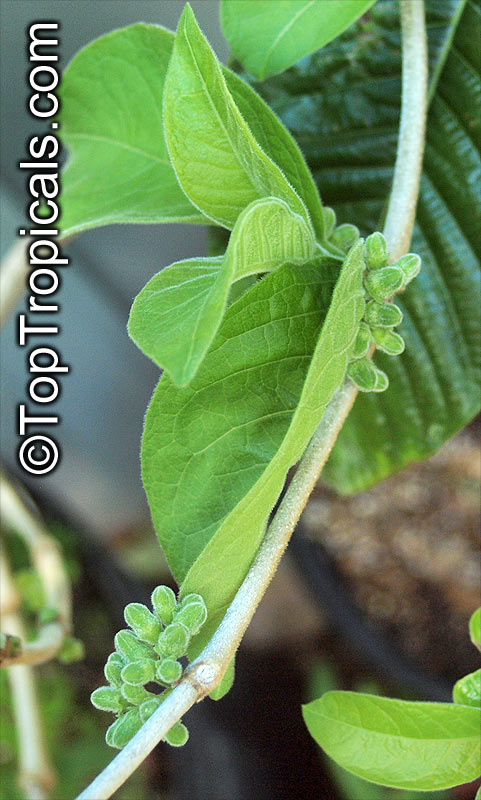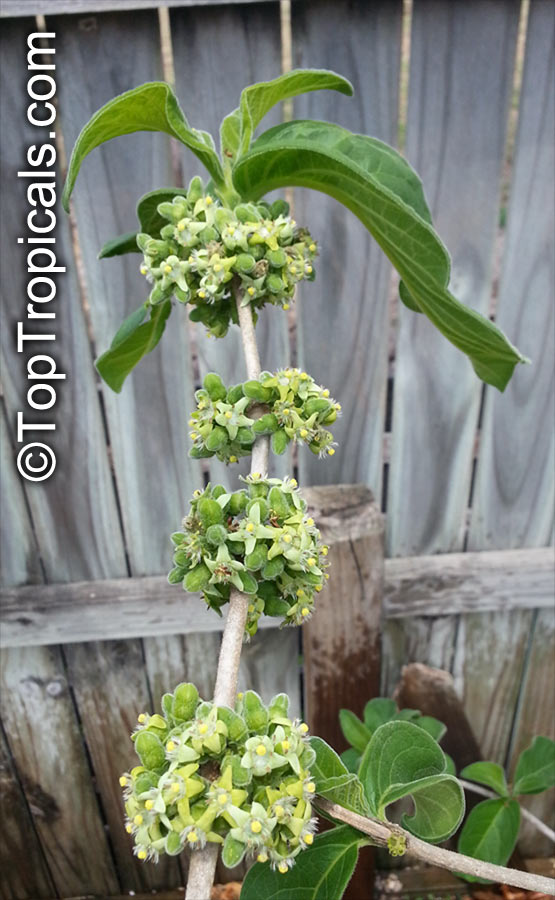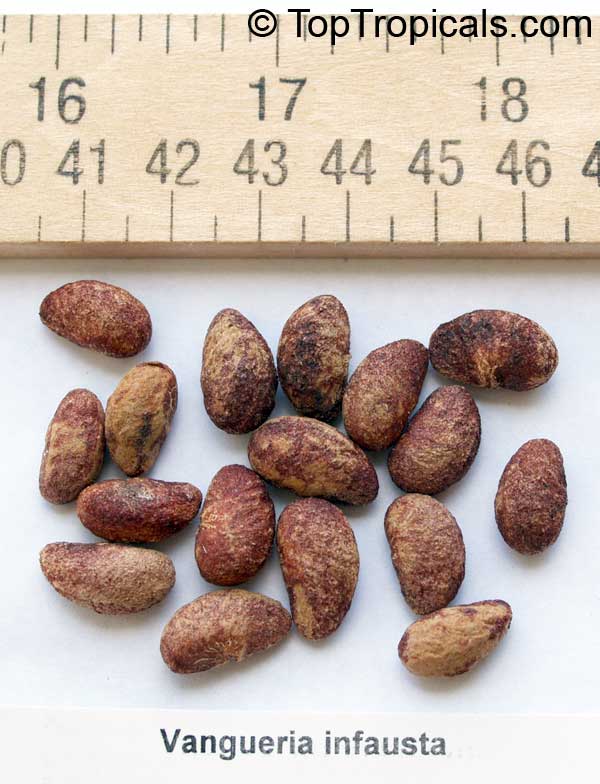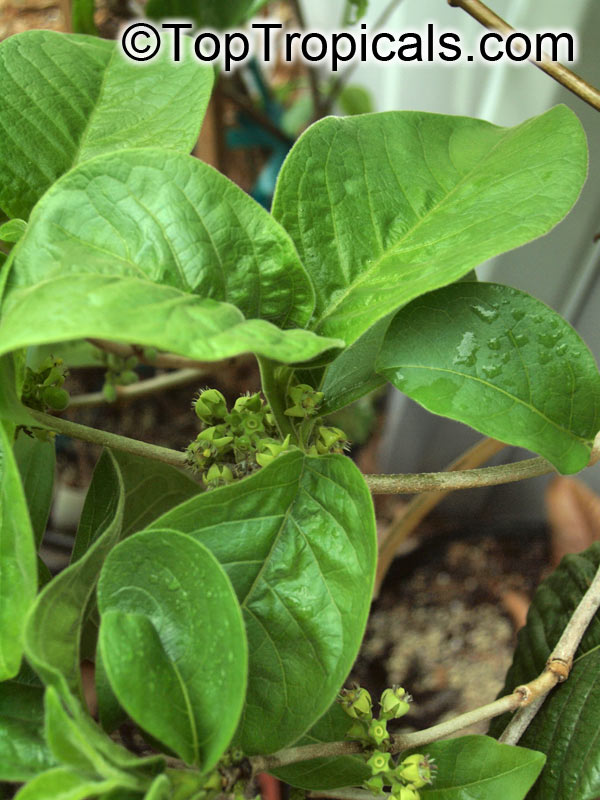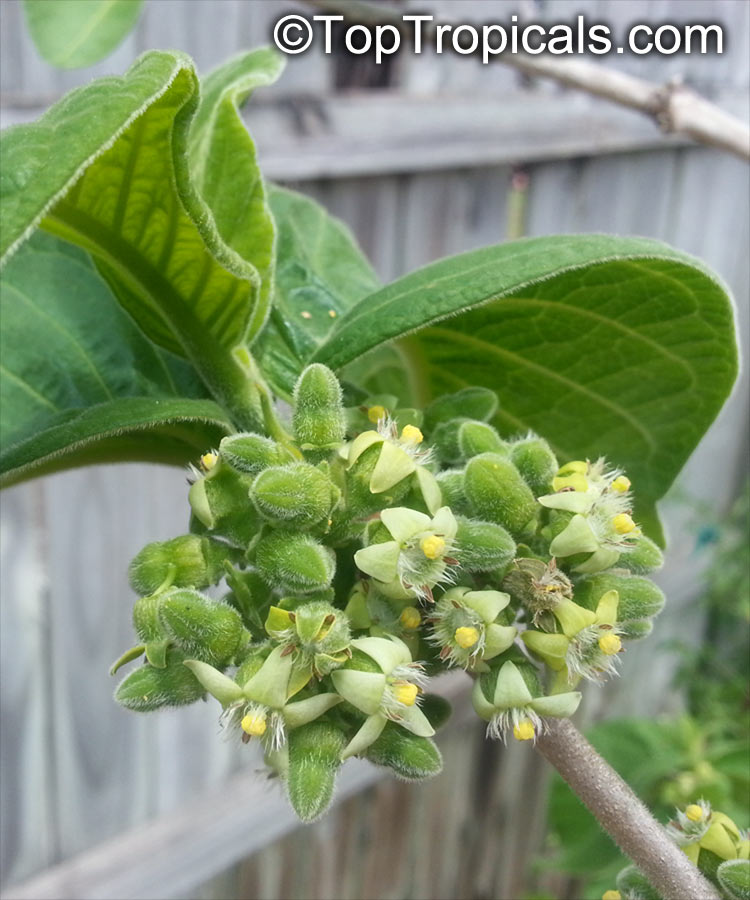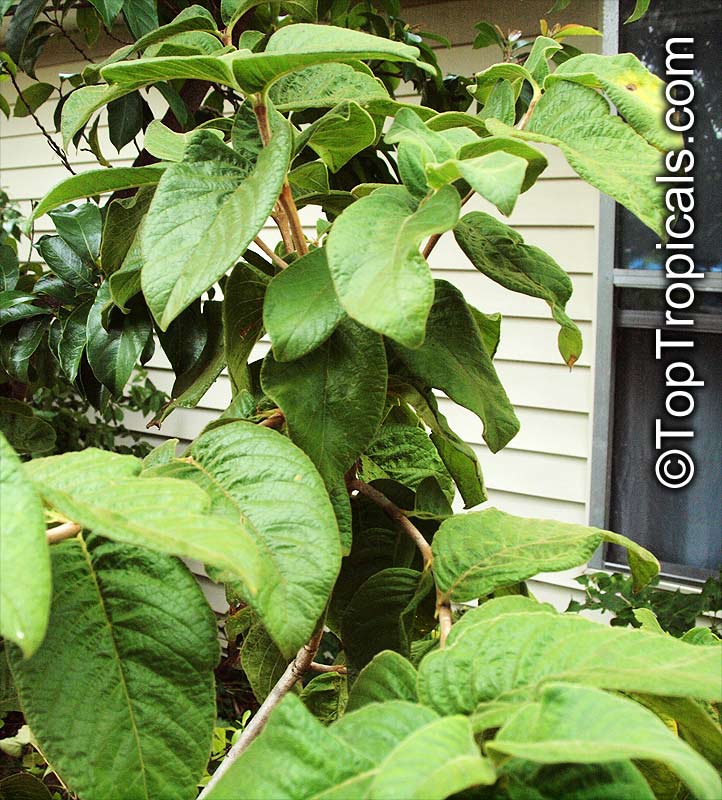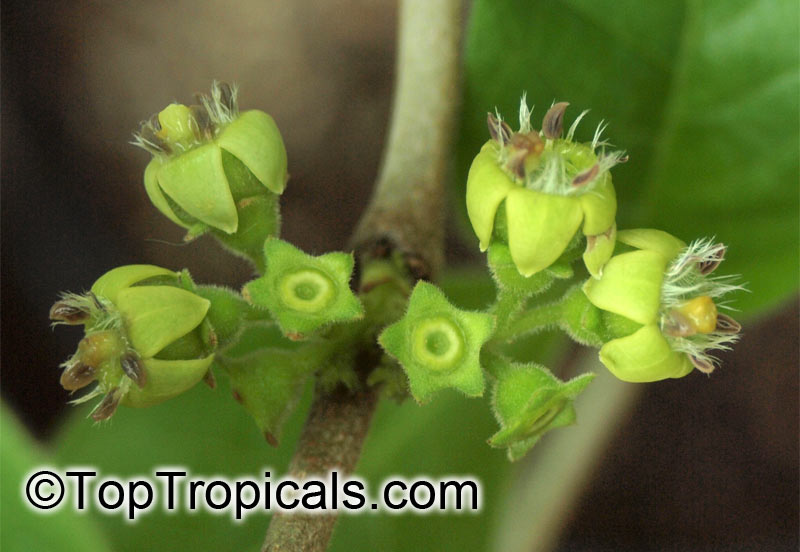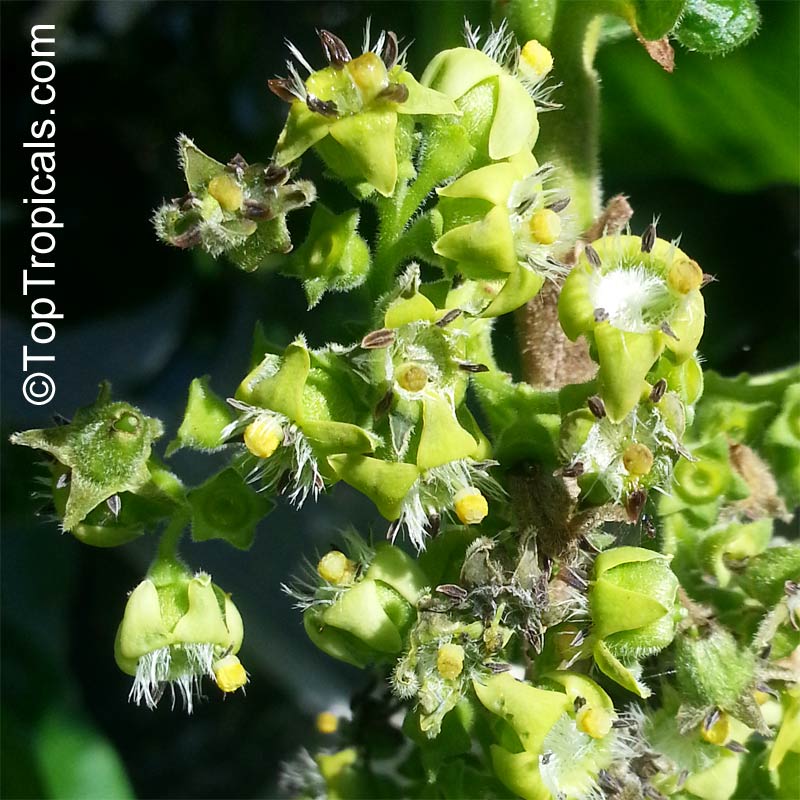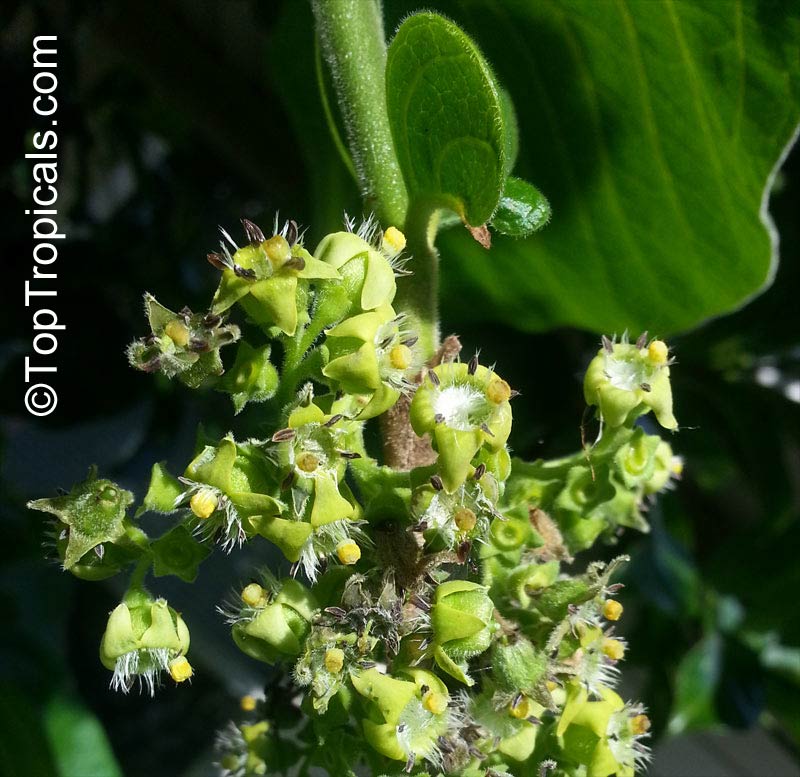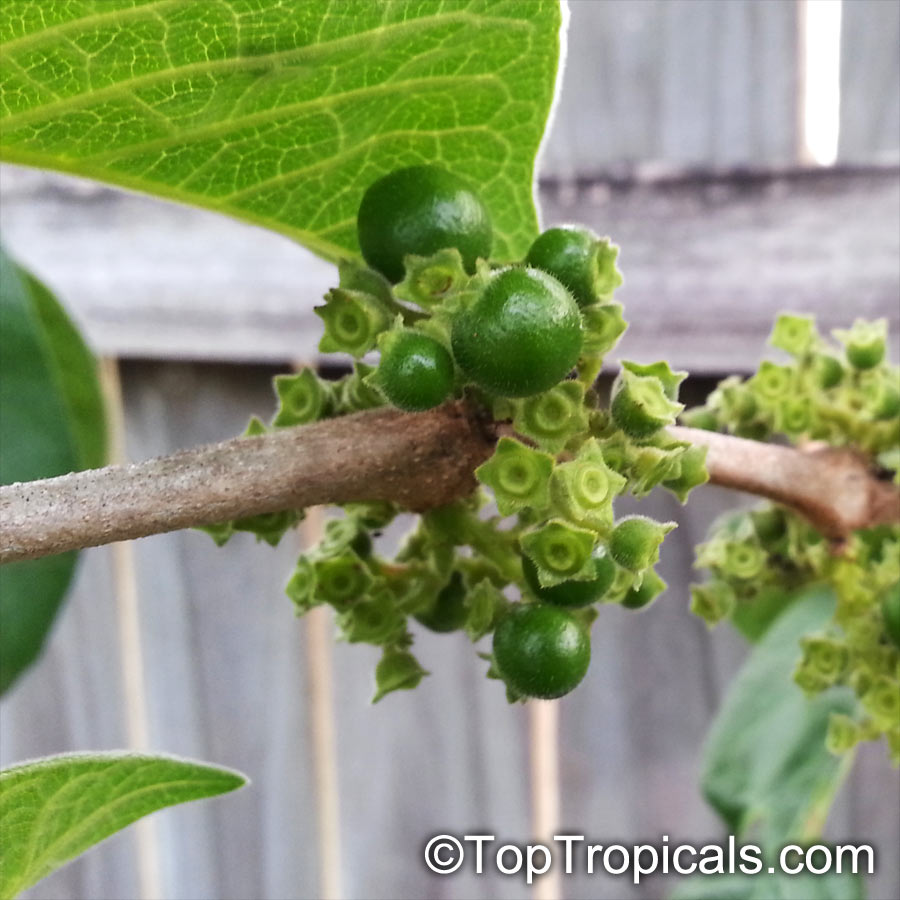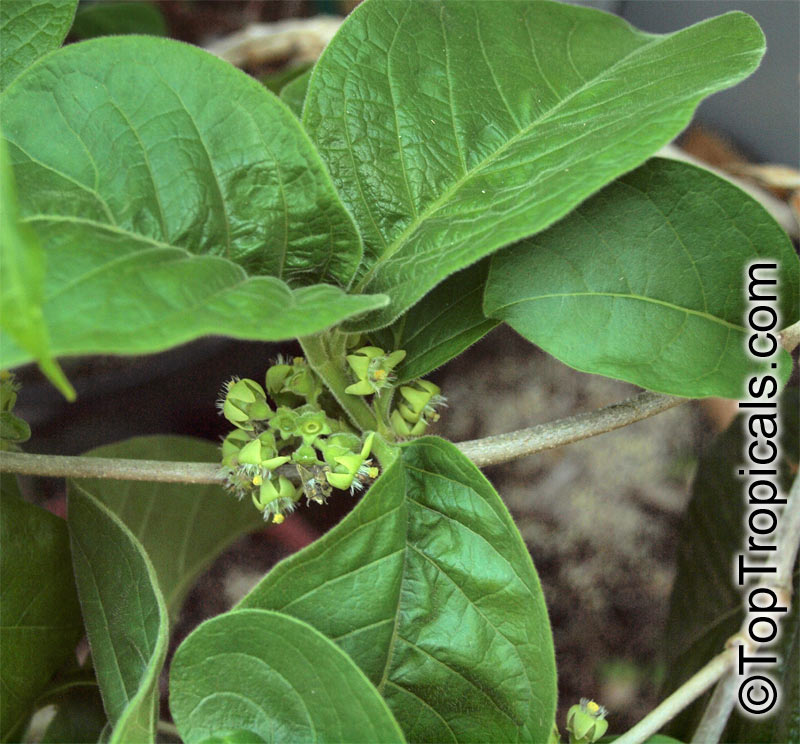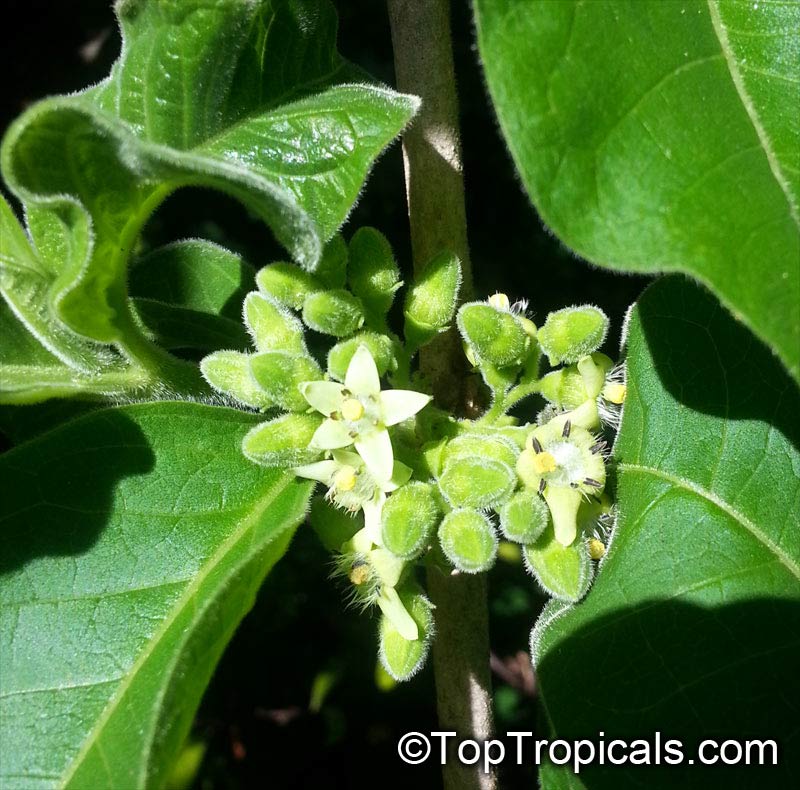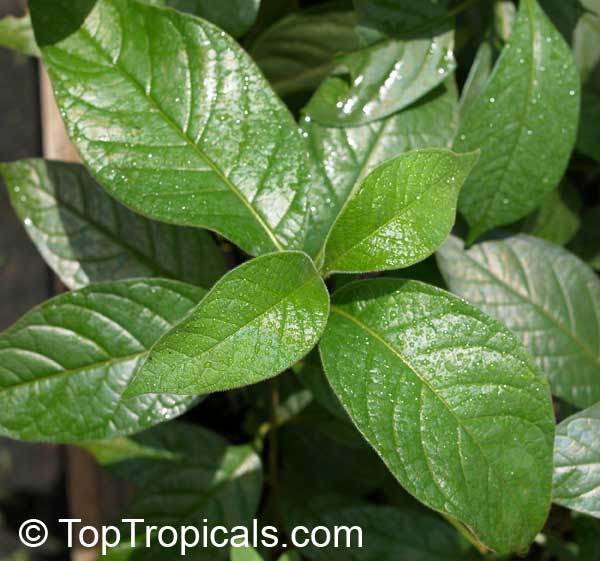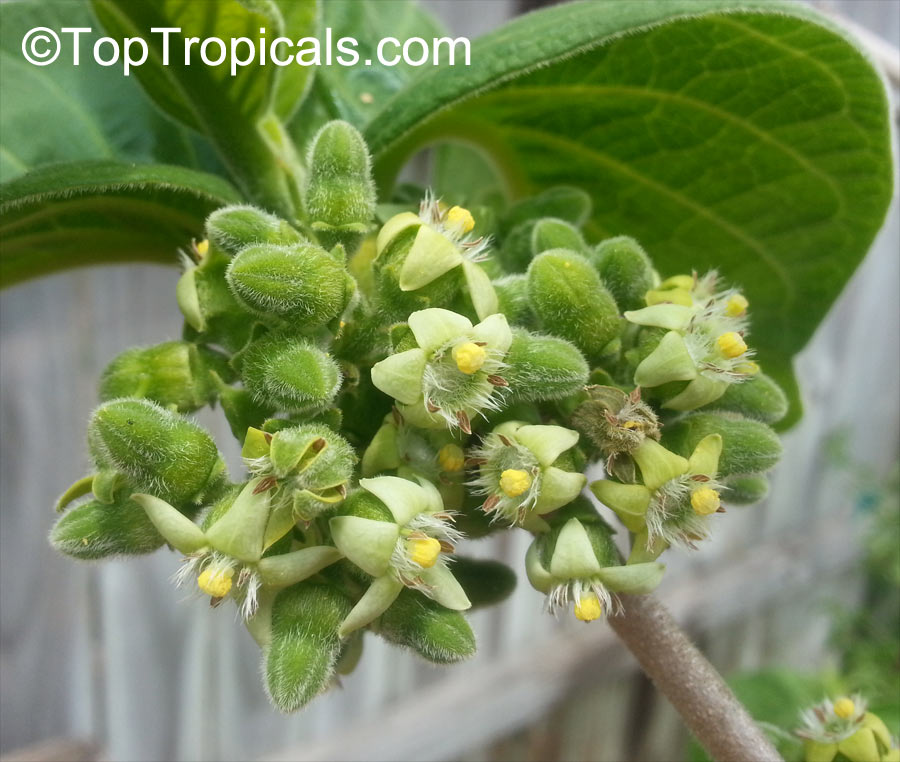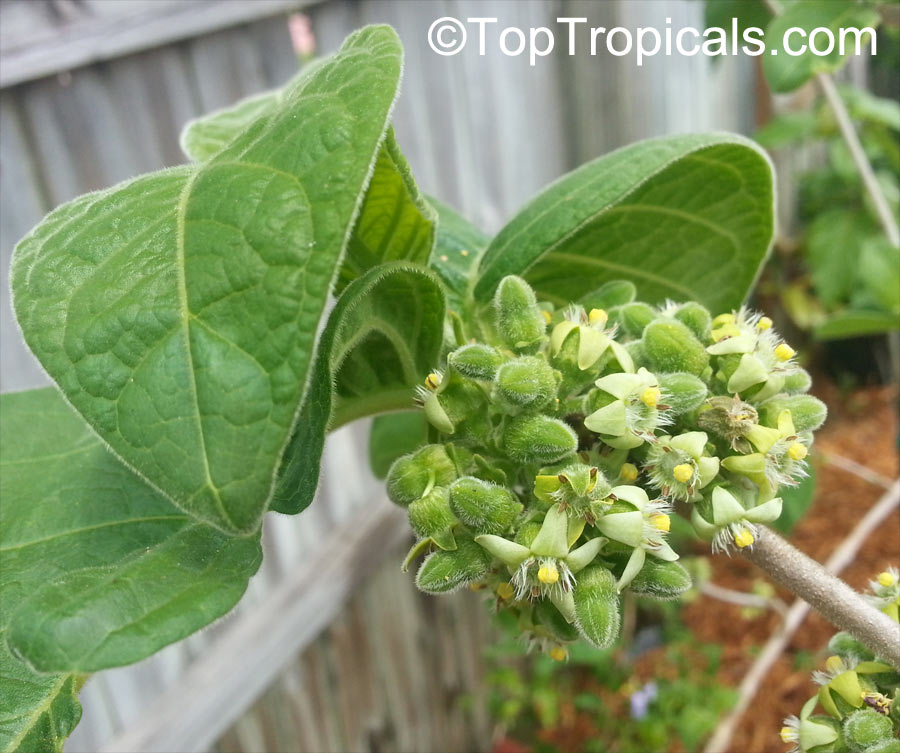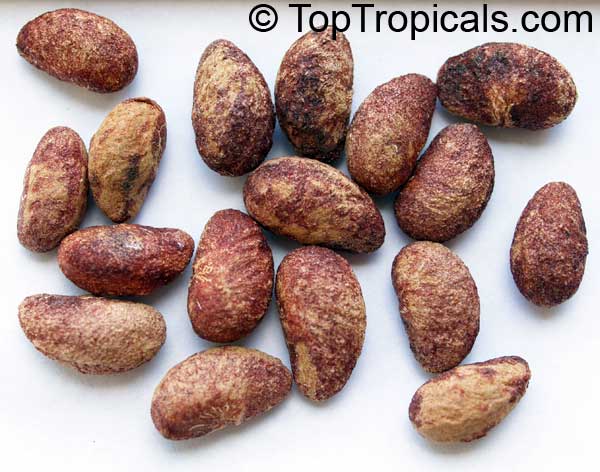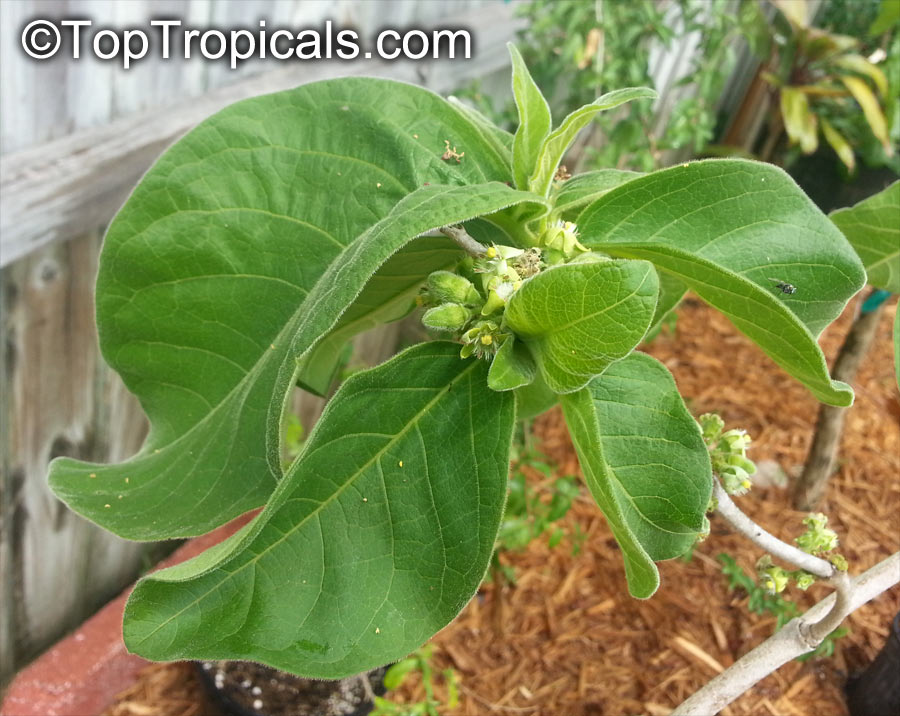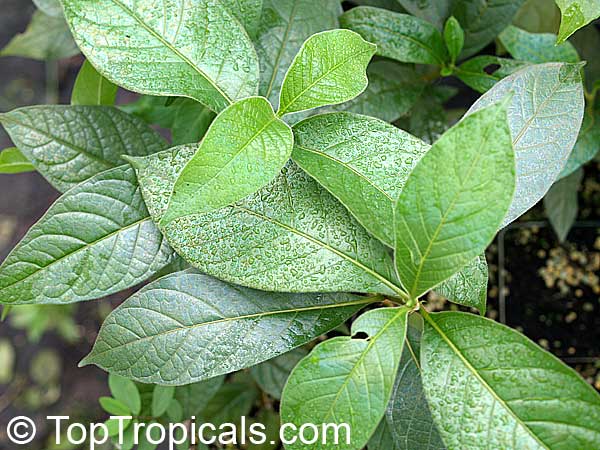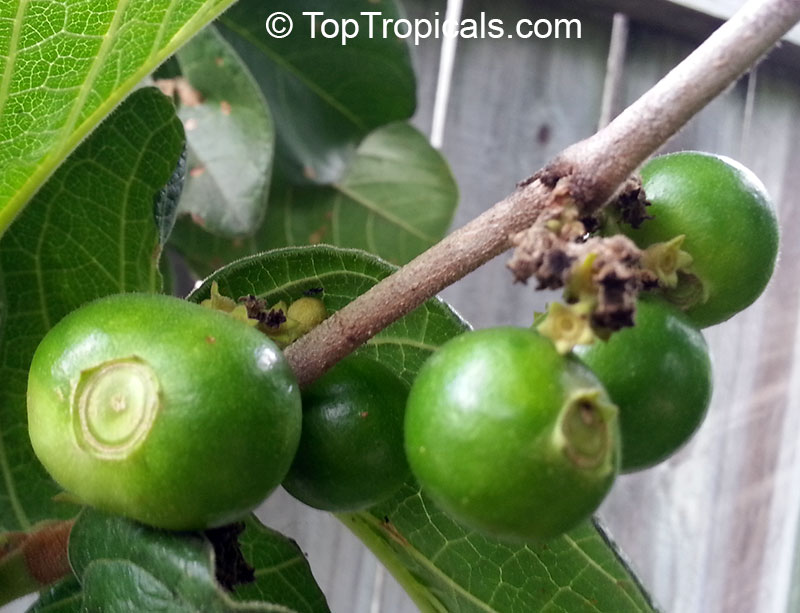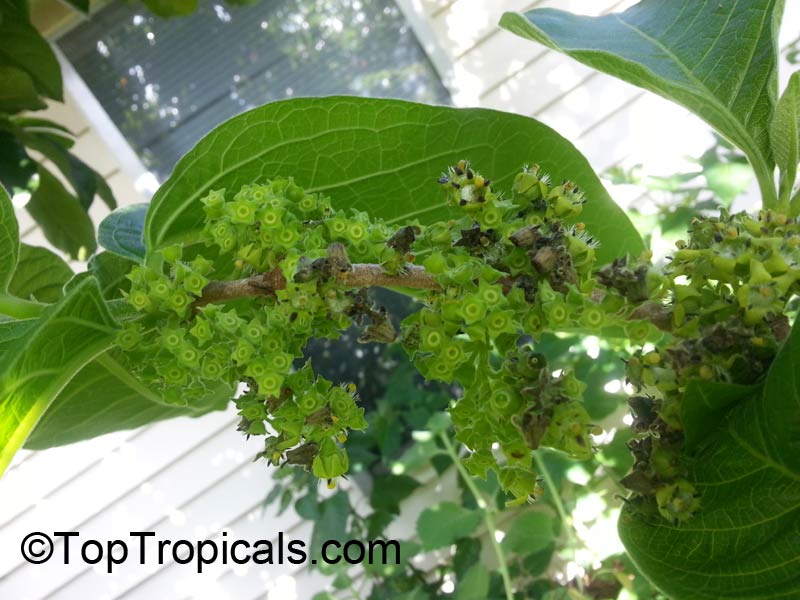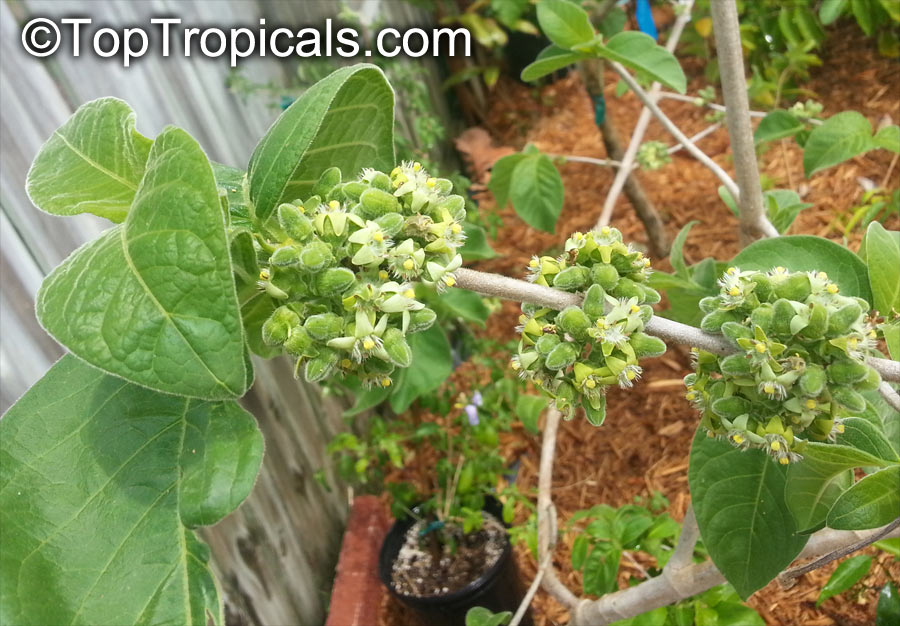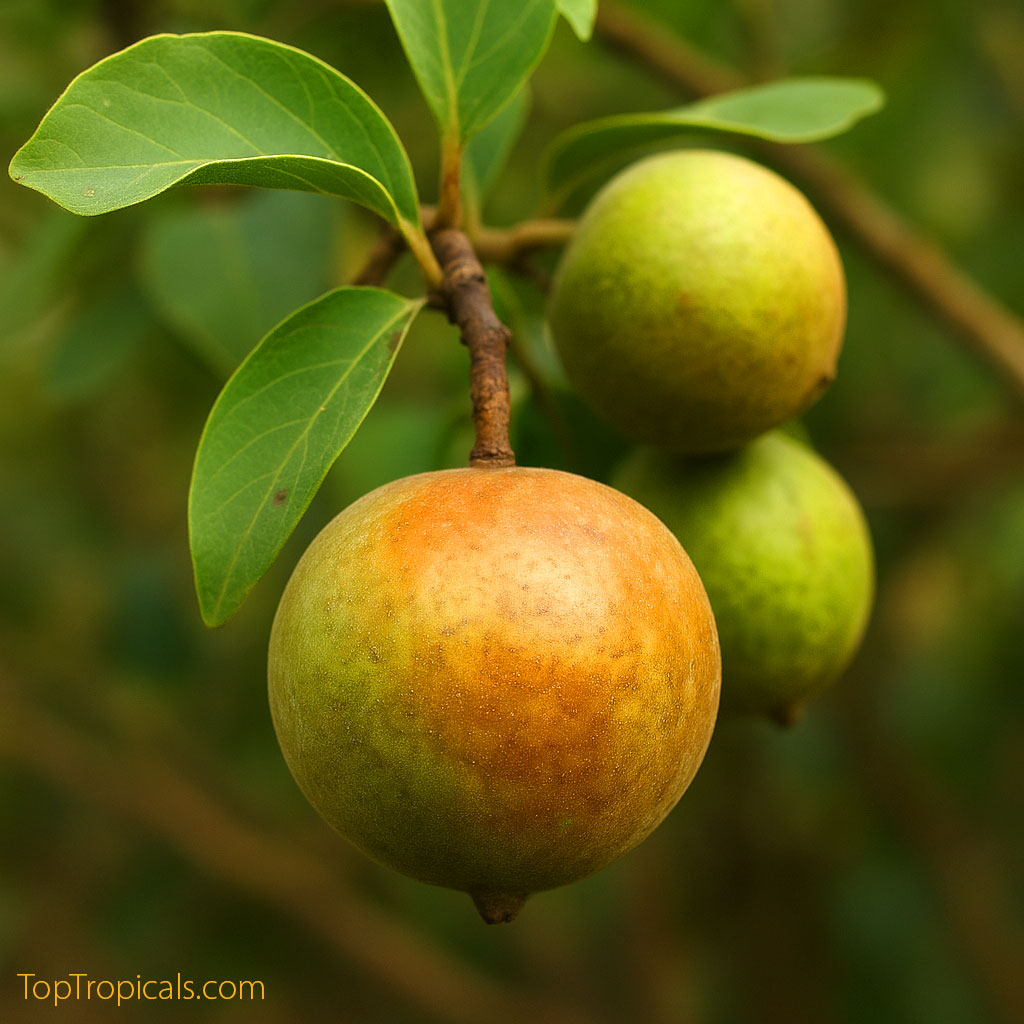Vangueria infausta (Wild Medlar)
Top Tropicals Plant Encyclopedia
Botanical name: Vangueria infausta
Common names: Wild Medlar, Spanish Tamarind
Family: Rubiaceae
Origin: South Africa







It is native to South Africa and is usually found in semi-arid to sub-humid habitats and rocky outcrops.
It can take full sun with moderate water, and the mature plant can tolerate temperatures as low as the mid-30s Fahrenheit for a short period of time. Still, it is best grown in USDA Zone 9-11 and if grown in cold regions it needs to be in pot, and have watering every day.
Wild Medlar is an ethnomedical plant which is valued both as food and as medicine and its leaves are used to prepare an infusion that is believed to help with fever, cold, and stomach ache, as well as other ailments. The fruit can be eaten fresh, dried, or cooked, and the leaves are also edible. Since it is rich in various nutrients, the plant can be beneficial for human health when consumed. That, combined with its delicious taste, makes it a desirable plant to grow. Each Wild Medlar tree can bear up to 20-40 fruits, depending on the tree health and the environment. Furthermore, its bark and foliage are said to yield yellow, green and purple dyes. This makes it useful not just to human consumption, but also to dyeing cloths and fabrics, a widespread practice in the area this plant originates from.
